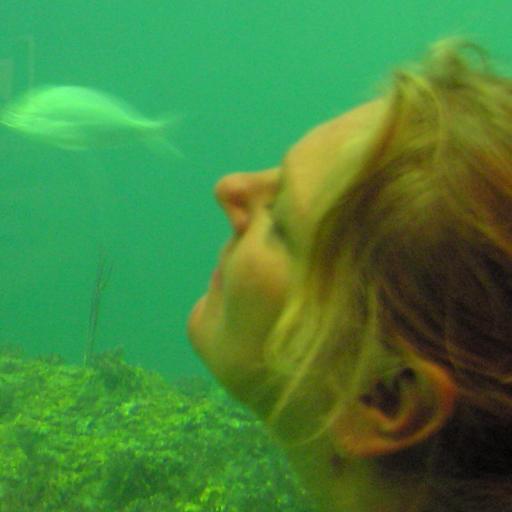
Amy
@RonnaCoins4509For the rest of your life, stand at your own height and see the scenery you should see
Similar User

@Richard05720572

@IUT_de_Bordeaux

@K3Lfloaton

@catsford

@MartySeroter

@mr_j_a

@jerr_perez

@FrannyJeffers72

@16uFam

@thedestroyer522

@MikeyLikesit_17

@StuartNCollins7

@Angusmom2
The surface of the starfish Crossaster papposus is something out of this world. I rarely observe this colouration, but if I do, I always take a few photos.

I miss the warm seas a bit. I've been diving in -2°C water for over a month now, and it's only now the sea is getting warmer, it's already +6. But it's +27°C somewhere and there are fantastic coloured corals all around.

In the last couple of weeks, I've been vigorously editing dozens of grant photos that can't be shown yet (until autumn, argh). Suffering because I want to show everything immediately! Well, this season's new images are also coming out awesome.

Clione limacina kid. The thing is just 5 mm in size. It still has the larval ciliary bands, which will fall off later. The transparent balls under the skin are fat droplets that accumulate as they digest sea butterflies.

For some species of skeleton shrimps, consuming individuals of one's species is noted. I've seen some weird scenes with them several times but never looked closely. Then I took a picture, and yesterday I found a Caprella with a decent-sized amphipod sticking out of its mouth.

Lion’s mane jellyfish (Cyanea capillata) without its mane. After reproduction, they shrink in size, lose thousands of tentacles and become fantastic alien flowers.

These are young, newly hatched skeleton shrimps from the Sea of Japan hanging out on the Blue bat star, Patiria pectinifera. The Far East's underwater life densities per square metre are astounding sometimes.



Caprella septentrionalis from the White Sea. There are very few of them now – the large over-wintered skeleton shrimps are slowly crawling out on algae and sponges. Shortly they will start breeding, and in two months, the entire seabed will be covered with these tiny crustaceans.

Euplokamis dunlopae, one of my favourite arctic ctenophores. One of the few that can swim backwards!

Here we go again! The water is muddy and cold, the gear is heavy and warm, and the animals are small, but there are plenty of them.

Alitta virens shiny metal body. Every time I find worms in vibrant colours, I get excited. My desired worm is brilliantly black with bright orange parapodia. I've only seen such a thing once, but I was without a camera. The search continues.

Back from a crazy four-month+ trip to a cold, dreary Moscow. Good thing, I will be at my biological station on the White Sea soon, where I can dive in and take pictures of these guys. I'm missing it already.

And the last one, closing the sponge week. Leucosolenia sp., a beautiful mess of tubes that looks like an alien tree. I keep finding them in all new shapes, and I'm not sure they all belong to the same species.

Polymastia arctica is another cold-water sponge with an unusual design. It has buds at the tips of its "fingers," which at some point will detach and drift away with the current or roll out by itself to form another little sponge somewhere else.

Killer sponge, Chalinula nematifera. This purple beauty is able to overgrow living corals when they are slightly weakened or bleached, eliminating its access to food and light, what leads to the coral's death. Nature is harsh.

The next weird sponge, whose scientific name I couldn't find. This thing lives in the Indian Ocean, around the Maldives. It's stiff and sharp but exquisite, with an incredible texture and color. I love it!

This bright golf ball is also a sponge from the Tetillidae family. Despite its attractive appearance, you shouldn't touch it with bare hands; it has very thin, sharp spicules that easily penetrate the skin and break off. Don't know the species name - it's from the Northern Kuril.

United States Trends
- 1. Jake Paul 1,03 Mn posts
- 2. #Arcane 228 B posts
- 3. Jayce 50,7 B posts
- 4. Good Saturday 26 B posts
- 5. #SaturdayVibes 3.090 posts
- 6. Serrano 247 B posts
- 7. #saturdaymorning 2.080 posts
- 8. #PlutoSeriesEP5 121 B posts
- 9. Vander 16,5 B posts
- 10. AioonMay Limerence 104 B posts
- 11. #SaturdayMotivation 2.044 posts
- 12. Pence 81,8 B posts
- 13. maddie 20,8 B posts
- 14. WOOP WOOP 1.396 posts
- 15. John Oliver 14,4 B posts
- 16. Caturday 7.311 posts
- 17. Jinx 110 B posts
- 18. Fetterman 35,2 B posts
- 19. Father Time 10,8 B posts
- 20. He's 58 31,6 B posts
Who to follow
-
 Richard Paul
Richard Paul
@Richard05720572 -
 IUT de Bordeaux
IUT de Bordeaux
@IUT_de_Bordeaux -
 K3LCountry⬆️Party🦅
K3LCountry⬆️Party🦅
@K3Lfloaton -
 🟧 catsford
🟧 catsford
@catsford -
 Marty Seroter
Marty Seroter
@MartySeroter -
 Jorge Luis Alvarado
Jorge Luis Alvarado
@mr_j_a -
 Jerry P. 🇺🇸 🦅🇲🇽 🏳️🌈 🇺🇦💙🌊🌊
Jerry P. 🇺🇸 🦅🇲🇽 🏳️🌈 🇺🇦💙🌊🌊
@jerr_perez -
 FJ72 🇬🇧
FJ72 🇬🇧
@FrannyJeffers72 -
 Fam Signature
Fam Signature
@16uFam -
 Jason D.
Jason D.
@thedestroyer522 -
 Punchline
Punchline
@MikeyLikesit_17 -
 Stuart Collins
Stuart Collins
@StuartNCollins7 -
 Angusmom
Angusmom
@Angusmom2
Something went wrong.
Something went wrong.































































































